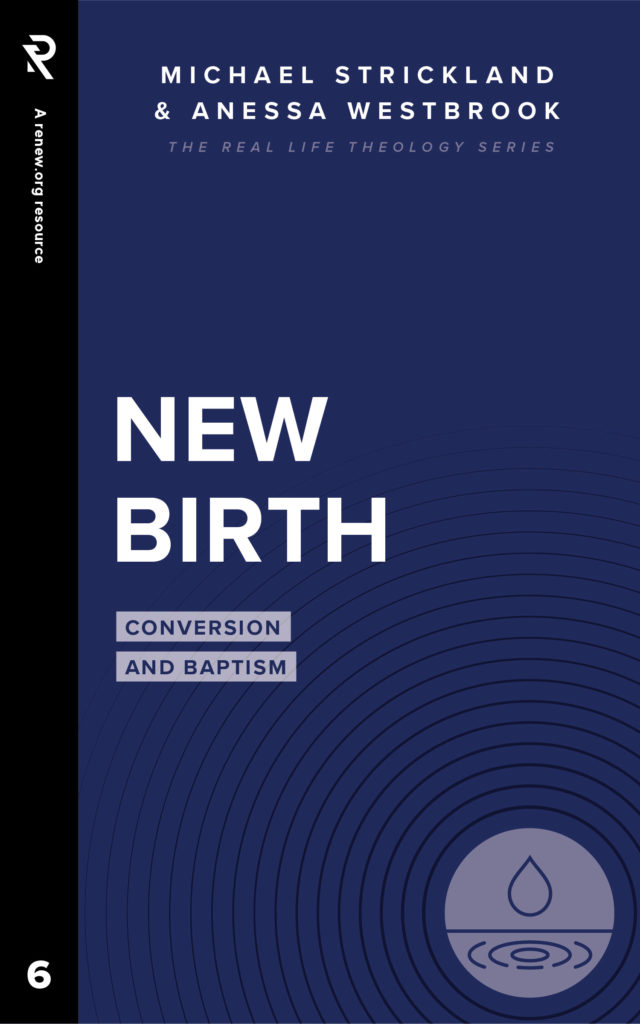
The Use of Programs in a Women’s Ministry
The use of programs in a women’s ministry can make up a large portion of the work a women’s ministry does. A particular program could be held once a year, quarterly, bi-monthly, monthly, bi-weekly, or even weekly. Ladies’ days, craft nights, Bible studies, special seasonal events, and mentoring groups can all classify as a program.
Often, women’s ministries begin with two or three options and then expand from there. In the last article we discussed a common starting point, mentoring groups. For the purposes of this article, a “program” will be defined as something that is set up in a series and occurs more than once a year. An “event” will be defined as something that occurs once a year or celebrates a special occasion (such as a holiday).
Finding the Right Balance
When planning programs for a women’s ministry, it’s important to find the right balance of events in both type and frequency. While programs are a useful tool, a women’s ministry should not be program-driven. A women’s ministry leader once said something like, it’s easy to identify a women’s ministry which is program-driven: their calendar is full and the leaders are tired!
While having a multitude of programs and events can make a women’s ministry look thriving, with demands on the time of both leaders and participants, it’s important to strive for meaningful events that meet needs rather than having events for the sake of just having something on the calendar. It’s also more encouraging to have events that are well-attended rather than letting busyness send them into a trajectory of a slow fade.
In her book Rethinking Women’s Ministry, Cyndee Ownbey reflects on a decline in attendance at women’s ministry events. She has identified six barriers that discourage participation: work, spiritual apathy, biblical illiteracy, family, cliques, and cultural messaging differences between the church and the world. Traditionally, many women’s ministries have focused on regular activities during the work hours, targeting stay-at-home moms. However, a 2017 Women’s Bureau report says 70 percent of mothers who have children under the age of 18 work, and of those, 75 percent are full-time. Additionally, 40 percent of households with children under the age of 18 have mothers who are the primary or sole wage earner.[1]
“It’s important to strive for meaningful events that meet needs rather than having events for the sake of just having something on the calendar.”
Ownbey also says, “While we might typically expect a child’s sporting event to trump a scheduled women’s ministry event, lately, sports practices, musical lessons, and club meetings have been elevated to the same level of importance….Family outings will almost always trump women’s ministry events as well.”[2] Perhaps this report is surprising, but in all likelihood this is probably something that most churches have noticed happening as these same factors are likely affecting many areas of church life. Families are under so much pressure and spread so thin, family time has become valuable as families attempt to keep themselves intact. While it may be easy to be critical of some of these choices, these need to be considered as we create ways to support these women in their efforts.
The demands women face when balancing their responsibilities at work, church, and in their personal lives can lead to difficult choices when it comes to taking time to attend a women’s event. When a woman says “yes” to attending, she may feel like she is neglecting other responsibilities and may feel guilty for taking time out. If a woman can see that attending an event will help her in other areas of her life, even if it’s just coming away refreshed, then that makes it an easier yes. When the program is a well-run, high-quality event, it will help her feel like her time is well-used. If it is disorganized or seems like a waste of time, then there is a good chance she will not be involved long-term.
“When the program is a well-run, high-quality event, it will help her feel like her time is well-used.”
Getting Started
One effective way to launch a women’s ministry is through an event. If you begin your women’s ministry with a mentoring program, then you might consider having a launch party. Invite all the participants to come and find out whom they are paired up with or which group they are in. Another idea for a first event would be to have a ladies’ day that focuses on launching the women’s ministry. Breakout groups could be used to help brainstorm and gather ideas from the women about what types of programs and activities they would like to see happen. Once a women’s ministry has goals and has decided how they want to launch, they can begin to plan additional programming.
As you poll women to get their input, they might tend to mention needs that are more focused on a group within the larger group. Common answers are “parenting” and “marriage,” but as you think about what to focus on in your programming, don’t forget that some of these areas of focus actually exclude many women who are not married or do not have children. All women have needs for a growing relationship with God, a balanced life, and regular spiritual practices. When a ministry focuses on needs that reach a broader group of women, especially those that can create connection between the generations, it has the opportunity for maximum connection and effectiveness.
“All women have needs for a growing relationship with God, a balanced life, and regular spiritual practices.”
As you begin planning, carefully consider the needs of the women in the congregation. It might be helpful to classify each need as a “felt need” (i.e., more of a wish or desire) or a “real need.” Next, brainstorm with your team some ways these needs could be met. At this point, all options are on the table as generative thinking is practiced. This process is so important that it should not be attempted in just a single one-hour session. Time needs to be given to pray, to reflect, and to engage in conversations with new voices before entering into the evaluation and planning stages. Which needs seem to be the most urgent, widely felt, or key to the growth of the women in your congregation? The goal of the programs always needs to be kept in mind, too. All programs should contribute toward the development of women in one of the five areas: relationships, emotional health, physical well-being, knowledge, and spiritual growth (see “Designing and Proposing a Women’s Ministry”).
Once your team is feeling drawn toward certain needs, create a short list for deeper consideration. For each need, ask yourself the following questions:
- What is the easiest place to begin meeting the need?
- What is your best guess about the most effective way to meet the need?
- Do you have the personnel and funds available for the most effective way? If not, is obtaining what is needed reasonably possible?
It is possible that the most effective way to meet a particular need is worth waiting for, but often it’s important to just begin somewhere. As a ministry begins trying to meet needs, it will learn more about their specifics. This new information should be incorporated into future iterations of the program.
“It is possible that the most effective way to meet a particular need is worth waiting for, but often it’s important to just begin somewhere.”
An effective approach that fits within this idea of being need and community-driven is the missional approach. It’s helpful to see this approach as consisting of five steps: awareness, understanding, evaluation, experiment, and commitment.[3] Being missional means being a part of a community. The Church is called to have a heart like God does for the world and to be witnesses in both local and global contexts. Missional approaches focus on building community and see Christians as called to be a part of community. [4] Women find themselves in a wide array of settings within the community on a daily basis. Participating in everyday life and ministering as they go is part of what it means to have a missional approach. Roxburgh and Boren write, “Jesus came where people lived in their daily, ordinary stuff. He did not wait for the ideal religious time or setting and then ask people to come to Him. Instead, He went to them.”[5] As women walk alongside others, they can consciously act and minister to others.
Rhythm
As your team begins to add events, it’s important to think about a diversity of offerings. This is important for two reasons. First, it allows you to reach women with different schedules. It’s important to take a look at when the women in your congregation are available and where they can meet. It will be impossible to find a time when everyone is free at the same time, but it’s important to know when large segments could attend something.
Certain events could target particular audiences as well. For example, if you have a group of women working downtown you might be able to have a Bible study at noon, being mindful of the time it begins and ends. Bible studies could also be offered at different times and days, but follow the same curriculum so women could join the session that worked with their schedule that week.
“It’s important to know when large segments could attend something.”
Second, diversity in the frequency of offerings allows more women to become involved. Some women will not feel like they can attend a program on a regular basis but may be able to attend a quarterly, seasonal, or yearly event. Furthermore, having a variety of opportunities is also helpful because it opens up more opportunities to volunteer. There are some seasons of life when certain ministries are simply not possible for a woman to be involved with because she cannot guarantee consistency or it may be too big a strain on her when considering the balance of her other obligations. Having plenty of opportunities to serve at a quarterly or yearly event may allow women who can best function with a flurry of activity and then a period of rest afterwards. There are also some women who may want to be involved, but for various reasons are able to serve best from their home rather than in another location.
A diversity of options allows the maximum number of women to be involved. The importance of this cannot be stressed enough, as women tend to grow best through experiential opportunities. It allows them to put their faith into practice. As you are planning programs and events for your ministry, take into account the following frequency of offerings.
Yearly
Yearly programs can provide a rhythm for your women’s ministry. Some common examples would be a yearly ladies’ day or retreat. These could also include a yearly launch party for a ministry, such as the mentoring program launch.
Quarterly/Bi-Monthly
While a quarterly or bimonthly event may not sound often enough, these are a happy medium between yearly and monthly events. They are frequent enough to provide continuity and allow women to get to know one another, but infrequent enough that the leaders will not get worn down running them and women will not get tired attending them.
Seasonal
Seasonal events can be a fun way to provide fellowship and help create community among the women. Christmas parties, spring teas, and fall events often make their way into the fabric of the ministry, becoming something the women look forward to yearly.
Two potential issues may arise with these, however. First, consideration needs to be given to how these land during a busy season of the year. For example, a Christmas cookie exchange may work in one congregation but be impossible to make happen in another due to busy schedules.
Second, consideration needs to be given to who inadvertently gets left out. Mother-daughter events, particularly around Mother’s Day, are incredibly special. However, they could also be an unwelcome reminder to singles, women struggling to become pregnant, women who have lost their mother, and anyone else who does not fit into this category. If you are thinking about having an event like this, consider having a women’s event that is more inclusive and can span across different social categories.
“Consideration needs to be given to who inadvertently gets left out.”
Monthly/Bi-Monthly
Monthly events are a great way to build community within a church. They are frequent enough that it does not feel like a large gap between them, conversations can be continued, and friendships can be formed. Some programs could be on a variable schedule as well, planning to meet most months of the year but avoiding holidays. Book clubs could also schedule to meet monthly or bi-monthly depending on the length of the book. Supper clubs, monthly activity or craft nights, work nights for a card or food ministry, mentoring groups, mothers’ groups, group parties for widows, and singles get togethers are just a few examples of the type of activities that fit within this category.
Weekly/Bi-Weekly
Weekly events are often the powerhouses of spiritual growth and community development within a women’s ministry. Deep trust and friendship can develop when women are meeting together regularly. The depth of discussion in Bible studies depends highly on how much trust has developed within the group members. Weekly meetings provide the frequency needed for women truly to get to know one another. Other common examples of events that meet at these frequencies are playgroups, mother’s-day-out programs, exercise classes, one-on-one mentoring, and discipleship groups.
When deciding which frequency is most appropriate for your program or event, take into consideration the needs of the women in your congregation and the goal of the event. There are no automatically right solutions or right answers here, just what serves the women in your congregation the best. Make the best decision you can, begin, and then reassess and make changes as needed.
“Make the best decision you can, begin, and then reassess and make changes as needed.”
Taking the Next Step
Remember, perfection is not the goal when starting a women’s ministry. Striving to have the perfect plan can keep us from the good that can be done. Instead, give yourself permission to experiment knowing that future changes will be needed to make the event or program more effective. Even if a perfect plan were in place, it will only be perfect for a little while before tweaks are required. It’s much better to go into the process with the idea of experimenting to meet needs.
Programs and events are great ways to build substance into a women’s ministry while providing the flexibility needed to make adjustments. The beautiful thing about having a variety of programming is when one part of the women’s ministry needs a change, the other pieces can still stay in place to provide continuity. It also provides multiple options for women to choose from, helping meet a wider variety of needs.
[1] Cyndee Ownbey, Rethinking Women’s Ministry (ONB Press, 2019), 18.
[2] Ownbey, 19.
[3] Alan J. Roxburgh and M. Scott Boren, Introducing the Missional Church (Grand Rapids, MI: Baker Books, 2009), 141.
[4] Robert A. Fryling, The Leadership Ellipse: Shaping How We Lead by Who We Are (Downers Grove, IL: IVP Books, 2010), 131.
[5] Roxburgh and Boren, Introducing the Missional Church, 94.









